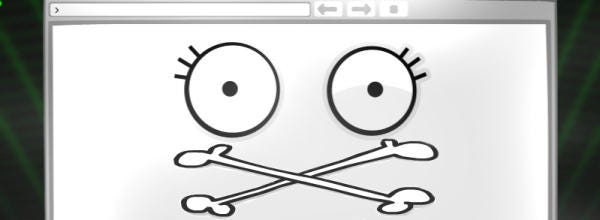World Of Goo Piracy Rate: "82%"
The post yesterday reporting World of Goo's 90% piracy figure drew a surprising response. The P-word regularly generates comments threads that scare our hosts, but this one was odd. It became a discussion about whether one could disprove the 90% figure, and then extrapolating this to reach peculiar conclusions. Some could see this as people claiming there were far fewer stab wounds than first predicted and therefore there hadn't been a murder. Others might suggest that fighting over the exact number is completely irrelevant, as that's not the point of the issue. Now 2D BOY have responded with new look at the figures.
In response to the vociferous arguments that dynamic IPs and multiple installations could be responsible for a lot of the 90% of registered IPs against sales, 2D BOY dug deeper. While it's true that a dynamic IP, or second installation, would appear as a unique user, that doesn't take into account the player IDs. The majority of those whose IP rolls around with each connection would still be using the same player name. So based on player names, 2D BOY discovered that there are 1.3 IP addresses per player - not the figures that many were spuriously claiming.
The stats are these:
76% of players have contacted the server from 1 IP
13% from 2 IPs
5% from 3 IPs
3% from 4 IPs
1% from 5 IPs
1% from 6 IPs
1% from more than 6
Of course it will be pointed out that each game has room for three player IDs, and they took this into account too.
"we also looked at how many players IDs were created (rather than used) from each IP address. given that the vast majority of player IDs are associated with only a single IP, this is a fairly accurate measure of how many profiles the average user created. on average, a player has 1.15 profiles per installation." [Their emphasis]
It then completely nerds out to get the figures. I'll not summarise, but paste their maths:
when we take the total number of player IDs (which is smaller than the number of unique IPs from which leaderboard entries came) and divide it by 1.15 (the average number of profiles per installation) the number of estimated unique installations drops by about 35% as compared to the estimate based on unique IPs. let us further say that the average user installs the game on 1.25 computers with different IPs (i.e. not behind the same router), which i think is a high estimate. that lowers the estimated unique installations by another 20%. after factoring both of these in, the piracy rate would still be 82%, and we should keep in mind that this number doesn’t include those who never opted to submit scores to the leaderboard (it’s an option that’s off by default). so while it’s possible that the actual piracy rate is lower than 90%, it’s unlikely that it’s significantly lower. 2d boy hopes this satisfies the more rigorous number crunchers out there :)
A drop from 90 to 80% makes one difference: it means there are twice as many legitimate copies out there as previously thought. But twice 1 out of 10 is 2 out of 10 - it's not the most enormous leap.
I'm sure that many will pick at the maths above and argue their reasoning why they think this number might be lower (or even higher), but I'm not sure that's relevant. Unless there's a dramatic proof out there that slashes this figure into a quarter, it strikes me as a distraction. If one can't destroy this number, and therefore the 82% figure is close enough to accurate, given that it might be slightly lower or higher, what then? That's the interesting discussion. Is this piracy a problem?
2D BOY certainly don't believe that adding DRM to their game would have made any difference. (I would argue that logic dictates this - something that is always cracked on Day 0/1, and only affects the legitimate customers and not the pirates, is going to do nothing realistic. But clearly very few publishers agree, so there's still much debate to be had). But have they been robbed of 86% of their sales? Again, the implication from the company is they think perhaps 1 or 2 of every 1000 of those pirated copies could have been a sale. But there's still tens of thousands of people with a copy without paying for it, far more than those who did pay.
Here's another question. If piracy figures don't represent lost sales, what do they represent? Is it an indictment of humanity? Are they free advertising? Could 2D BOY have benefited in any way from them? Or are they causing active harm?
Whatever the significance of the PC's piracy rates, the results from 2D BOY make one thing very clear: While some of us are paying for our fun, a lot of us are not.
Edit: A rather significant statement from 2D BOY's Ron Carmel appears below in the comments. It's helpful to put it up here:
"by the way, just in case it’s not 100% clear, we’re not angry about piracy, we still think that DRM is a waste of time and money, we don’t think that we’re losing sales due to piracy, and we have no intention of trying to fight it."

















